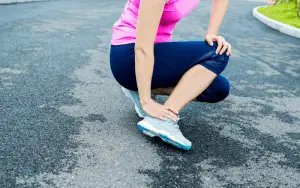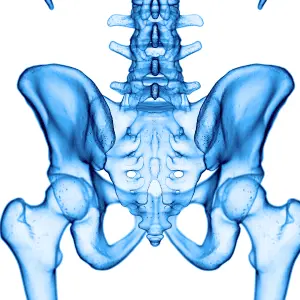Ankle Sprain Rehab: More than TheraBand exercises?
Ankle sprains are very common in athletics across a multitude of sports at a variety of performance levels: it seems most athletes from young to more mature, recreational to professional have experienced an ankle sprain.
In the United States, ankle instability accounts of 22.6% of all high school and collegiate athletic injuries (1, 2).
Most commonly, these injuries are treated conservatively; the athlete is placed in a boot or brace and sent to rehab the ankle. Range of motion and basic strength are restored as well as weight bearing tolerance and the athlete is returned to competition. The injury itself on the spectrum of possibilities seems relatively benign, until it happens again…and again.
One study predicts that 47% of athletes who sustain one sprain will do so again (3).
Why is it that athletes become caught in the vicious cycle of sprain after sprain? Are they returned to play too quickly? It’s possible, but I would argue that the rehab done is generally unimaginative and incomplete.
In a systematic review performed by Mason et al. in 2022, researchers looked at 16 different studies that investigated different risk factors for an athlete sustaining an ankle sprain (4). 3,636 athletes were included in the sample size, and 576 ankle sprains were noted.

80% of the sample were male and 80% of the sprains were incurred by male athletes.
Out of 21 prognostic factors, previous ankle sprain injury, higher BMI and higher body weight, lower isometric hip abduction strength and lower dynamic balance performance were all found to be statistically significant risk factors in male athletes. This should not be surprising as biomechanically this makes sense.
The majority of ankle instability events occur in the frontal (lateral) plane and the hip abduction strength is a major player in frontal plane stability. It is also known that our primary righting reactions occur in our hip and ankles and so if one area is deficient, it inherently increases the load on the other supports.
Dynamic balance assessment (such as the Y balance test) is an excellent way of identifying the athletes’ full extremity strength, body awareness and functional symmetry side to side.
If any of these areas are found deficient, it would put the athlete at risk for poor reaction time when placed in a compromising position on the field, leading to potential re-sprain. This seems to indicate the deficits from an ankle sprain can linger long after the pain and swelling have resolved.
So, if this is the case, physical therapists and athletic trainers would be wise to assess athletes more comprehensively and assign exercise programs and drills that address the full lower extremity closed kinetic chain.

The hip should be a special point of interest and a variety of balance and mechanical assessments should be performed on an athlete before he is released to sport.
Special attention should be paid to ensure correct performance of all composite motions and gross motor movements. It is important to gain isolated strength first, but then it must be followed with integration training during which the athlete can learn and practice using his newfound strength.
It is reasonable to say that if rehabilitation was more comprehensive in the treatment of the first ankle sprain, the prevalence of re-injury may decrease substantially.
More research should be done, especially on female athletes, to tease out further ways of maximizing rehabilitation effectiveness and returning athletes quickly and safely to their sport, while minimizing the likelihood of repeat incidence.
- Hootman JM, Dick R, Agel J. Epidemiology of collegiate injuries for 15 sports: summary and recommendations for injury prevention initiatives. J Athl Train. 2007;42(2):311. 2. Nelson AJ, 2.
- Collins CL, Yard EE, Fields SK, Comstock RD. Ankle injuries among United States high school sports athletes, 2005–2006. J Athl Train. 2007;42(3):381.
Pasanen K, Ekola T, Vasankari T, Kannus P, Heinonen A, Kujala UM, Parkkari J. High ankle injury rate in adolescent basketball: a 3-year prospective follow-up study. Scand J Med Sci Sports. 2017;27(6):643–9 - Mason, J., Kniewasser, C., Hollander, K. et al. Intrinsic Risk Factors for Ankle Sprain Differ Between Male and Female Athletes: A Systematic Review and Meta-Analysis. Sports Med – Open 8, 139 (2022). https://doi.org/10.1186/s40798-022-00530-y
About the Author: Jacqueline Sanders, PT, DPT

Jackie Sanders is a licensed Physical Therapist. She graduated from Wright State University with a Bachelor’s Degree in Exercise Biology. She then earned her Doctorate in Physical Therapy from the University of Cincinnati. In addition to being a physical therapist, Jackie is also a Certified Running Coach, with a special interest in video gait analysis. Her favorite part of physical therapy is working with patients to find creative solutions to meet their goals. She is passionate about treating patients holistically and determining the root cause of their impairments.
Jackie, from Syracuse, NY, was a competitive junior skier. She also played Division 1 tennis in college. She is a three-time Boston Marathon qualifier, a three-time USAT Nationals qualifier, and a 70.3 Ironman World Championship qualifier. When she’s not training and competing, she enjoys time with her family in the mountains.


